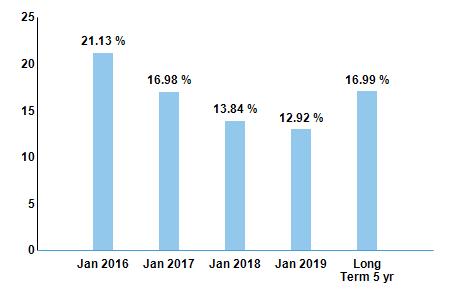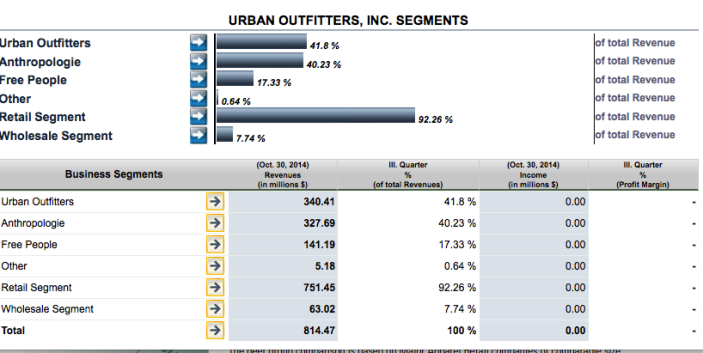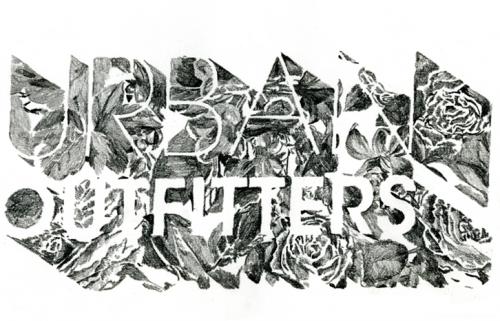 Urban Outfitters Inc. is a leading lifestyle specialty retail company that operates under its Urban Outfitters, Anthropologie, Free People, Terrain and BHLDN brands, and sells collections of fashion apparels, accessories and home goods in inviting and dynamic store settings. Its core strategy is to provide unified store environments that establish emotional bonds with the customer. It also operates a wholesale segment under the Free People and Leifsdottir brands. In addition to retail stores, the company offers its products and markets its brands directly to consumers through its e-commerce websites and catalogs.History
Urban Outfitters Inc. is a leading lifestyle specialty retail company that operates under its Urban Outfitters, Anthropologie, Free People, Terrain and BHLDN brands, and sells collections of fashion apparels, accessories and home goods in inviting and dynamic store settings. Its core strategy is to provide unified store environments that establish emotional bonds with the customer. It also operates a wholesale segment under the Free People and Leifsdottir brands. In addition to retail stores, the company offers its products and markets its brands directly to consumers through its e-commerce websites and catalogs.History
Urban Outfitters was created in 1970 by two retail novices, anthropology graduate Richard Hayne and his former roommate at Lehigh University, Scott Belair. Hayne was just back from two years working with Eskimos in Alaska as a VISTA Volunteer; Belair was a second-year student at Wharton School of Business and needed a project for his entrepreneur workshop. Over beer one night, the two came up with the idea of a store for college and graduate students, selling inexpensive clothes and items for dorm rooms and apartments. Pooling $5,000, they opened the Free People Store in Philadelphia, near the campus of the University of Pennsylvania. The store offered inexpensive second-hand clothing, Indian fabrics, scented candles, T-shirts, drug paraphernalia, and ethnic jewelry, in 400 square feet decorated with packing crates and beat-up furniture. “I was that market,” Hayne told Dan Shaw of the New York Times in 1994, adding that “everyone associated with the store was that market.”
The store was a success. “Belair got an A on the project,” according to Robert La Franco in a Forbes article, “and went on to Wall Street, where he [ran] his own bankruptcy workout business.” Hayne stayed with the business, adding such merchandise as coffee mugs and glassware to the product line. In 1976 he moved to larger quarters near the university, changed the store’s name to Urban Outfitters, and incorporated the company. In 1980, with sales around $3 million, Hayne opened a second store, in Cambridge, Massachusetts, close to several colleges.
In 1987 Hayne hired Kenneth Cleeland as chief financial officer. Cleeland, a graduate of George Washington University, had held financial positions with several wholesale and retail companies. At Urban Outfitters, he instituted financial controls to deal with shoplifting problems and Hayne’s rather casual bookkeeping practices. Profits increased, and Cleeland helped Hayne borrow $3 million to open six new stores within three years.
New stores in the chain followed the original concept and were located in metropolitan areas near college students. By 1995, Urban Outfitters stores would be established in Madison, Wisconsin; Ann Arbor, Michigan; Boston; Minneapolis; Seattle; New York; Washington, D.C.; Chicago; and Portland. Moreover, the chain would also secure a presence in California, with five locations in college towns. Even when Hayne was tempted to drift from his original concept, store locations kept the company focused on its college-age market.
The new stores maintained Hayne’s “counterculture” approach, and the company relied heavily on its buildings and interior displays to entice customers to enter, explore its stores, and buy its goods. “We always use renovated buildings,” Hayne told The Washington Post in a 1993 feature. “Other stores will go into a mall and put their image into a space, where we use an existing space to enhance our image. None of our stores look alike. We go into these old buildings and adapt them for ourselves,” he noted. In Washington, D.C., for example, the company took over a Woolworth’s store, complete with worn wooden floors, exposed brick walls, and a steel staircase to the basement. The Ann Arbor store was established in an old theater, and other locations included a former bank and stock exchange. In 1993, Urban Outfitters stores averaged approximately 9,000 net selling square feet.
The decor within each stores was also unique, although the atmosphere remained similar throughout the chain–casual and fun. Much of this was due to the staff and the company’s policy of listening to its customers. Hayne hired staff within the targeted age group and depended on their personal style to guide merchandising strategies. Staff decided on the music to be played, even bringing in their own compact disks, and department managers were made responsible for the look of their sections. “We have to come up with creative inventions for fixtures and displays,” housewares manager Susan Duckworth, 27, explained in The Washington Post, adding that “It’s the only place I’ve worked where you can bring an old crate to work, make something out of it and [the bosses] love it.”
“We try to appeal to the mainstream and those who want to cross the line every once in a while; we do stay abreast of fashion trends,” Sala Patterson, an 18-year-old sales associate explained in the Post article. According to a 1995 Forbes story, Hayne spent $4 million a year on salaries and expenses for over 75 young fashion buyers who checked out neighborhoods in the United States, London, and Paris to report on hot fashion trends. The chain’s unconventional atmosphere, merchandise, and music attracted students younger than 18 as well. As one 15-year-old explained to The Washington Post, “It’s such a down-to-earth place, it’s not a chain like the Gap and J. Crew. Everything’s really different.”
Urban Outfitters prepared its management, merchandising, and buying staff by recruiting recent college graduates and qualified store employees and sending them through a six- to nine-month “Management Development Program.” While in the program, participants had a series of rotations between stores and the home office. A “Manager-in-Training” program offered the on-the-job experience needed to become departmental, assistant store, or store manager.
As the company grew, it took steps to keep its organizational structure relatively stable. Employees were eligible for profit sharing and stock options and took turns producing “Urban World,” a quarterly in-house newsletter. Articles in the newsletter included reports from various branches and profiles of employees and customers, providing market research as well as internal communications. In 1993, the company initiated it “Shared Fate” program, designed to increase team management and give every employee the responsibility and authority to make decisions to increase productivity.
Recognizing that private label merchandise generally yielded higher gross profit margins than brand name merchandise, Hayne created the wholesale division in 1984 to design, produce, and sell its own line of junior sportswear. Michael Schultz joined the company in 1986 as president of Urban Wholesale, Inc. Schultz had previously served as president of Andrew Fezza International Division of Levi Strauss & Company and as a vice-president of merchandising at Pierre Cardin.
In 1990, the division replaced its signature Urban Outfitters collection brand with three separate labels: Ecote, Free People, and Anthropologie. The three apparel labels each targeted a different audience. Ecote produced solid and printed casual rayon dresses in styles ranging from baby dolls to A-lines and made up about 60 percent of the business in 1991. 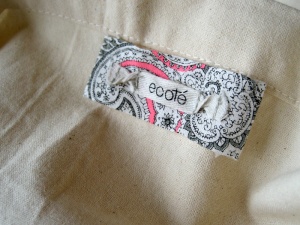 The Free People label produced sixties-inspired designs and hip casualwear, while Anthropologie made young women’s casual wear, primarily cotton, wool, and silk sweaters. Schultz expected Anthropologie to become the division’s biggest label because it was the most adaptable. As reported in Women’s Wear Daily, before the change, 70 percent of the division’s sales were to department stores and 30 percent to specialty stores. In 1991, it was just the opposite, as wholesale volume had grown 50 percent, from $10 million in 1989 to $15 million in 1990.
The Free People label produced sixties-inspired designs and hip casualwear, while Anthropologie made young women’s casual wear, primarily cotton, wool, and silk sweaters. Schultz expected Anthropologie to become the division’s biggest label because it was the most adaptable. As reported in Women’s Wear Daily, before the change, 70 percent of the division’s sales were to department stores and 30 percent to specialty stores. In 1991, it was just the opposite, as wholesale volume had grown 50 percent, from $10 million in 1989 to $15 million in 1990.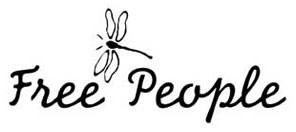
In 1993 and 1994 the Urban Wholesale division had revenue gains in excess of 76 percent and 56 percent, respectively. The company attributed this growth primarily to more and larger orders for the Anthropologie line from small and medium-sized specialty apparel stores. It should be noted that while much of the inventory of the company’s stores was from the three labels, buyers for Urban Outfitters and Anthropologie did not automatically buy from the wholesale division. Urban Outfitters and Anthropologie accounted for 28.8 percent and .3 percent of Wholesale’s total revenue in 1992, according to the company prospectus. By 1994, shipments of Urban Wholesale outside the U.S., particularly to Japan, was six percent of total sales. Merchandise made in the United States represented about 20 percent of the division’s production.
As the number of stores grew and the wholesale division was revamped, company sales increased. In 1990, net sales amounted to $37.4 million. In 1991, sales increased 17.3 percent to $43.9 million. Most of the increase, 75 percent, was due to new stores opened in 1990 and 1991. The largest selling product category in Urban Outfitters stores was women’s apparel. In 1992, it accounted for one-third of total sales, followed by footwear and accessories at 27 percent, men’s apparel at 22 percent, and apartment wares and gifts at 18 percent.
In October 1992, Hayne opened the first Anthropologie store in a renovated automobile dealership in Wayne, Pennsylvania, outside Philadelphia, and named Glen Senk president. After 16 years of selling T-shirts, jeans, and work boots, and with his original chain doing well, Hayne thus took the company’s strategy to older, more established shoppers living in the suburbs of major metropolitan areas. Anthropologie targeted customers who were focused on family, home, and career, with interests in travel, the arts, gardening, and reading. The Wayne store featured an espresso bar and placed greater emphasis on “hardgoods” such as furniture and a variety of home, garden, and tabletop products, including books and ceramics.
The decor of Anthropologie tended to be rustic and ecologically conscious. Product lines were intermixed and arranged in a variety of displays. For example, an antique bed might serve as the anchor for a section containing linens, towels, nightgowns, lingerie, soap, bath oils, picture frames. and mirrors. Another small area might feature children’s clothes, books, toys, and note cards, while birdhouses and diaries of handmade paper might be found alongside men’s sweaters and pants.
During 1992, company sales grew to $59.1 million, a 34.7 percent increase. The wholesale division introduced the Co-operative product line of fashion basics, consisting mostly of lower-priced cotton knit tops and sweaters. Profits also increased with the successful expansion of the company’s higher-margin private label program.
During 1993, Hayne opened two more Urban Outfitters stores, in San Francisco and Costa Mesa. Comparable store sales increased by 18 percent and total sales exceeded $500 per selling square foot for the first time. The wholesale division opened a large sales office in New York. Prices at Urban Outfitters stores during 1993 ranged from $.75 for greeting cards to $450 for a World War I-style leather bomber jacket. At the Anthropologie store, prices ranged from $1.00 for a greeting card to $1,500 for an antique Mexican cabinet. The company implemented its “Shared Fate” program for employees and initiated a company-wide profit sharing plan. Total sales for the year grew at 43 percent. In November, Urban Outfitters went public at $18 a share, raising over $13 million in capital through the initial public offering.
Hayne used the capital to continue his strategic plan of growth by adding new stores in the retail business and adding new customers and increasing sales to existing ones in the wholesale division. In 1994 he opened three new Urban Outfitters stores, two in Chicago and one in Pasadena, and indicated that he planned to open three or four new stores each year for next three years, some of which might be located outside the United States, in Canada and/or Europe. Based on the success of the Wayne, Pennsylvania, store, two more Anthropologie stores were opened in 1994, in Westport, Connecticut, and Rockville, Maryland, just outside Washington, D.C. In the company’s annual report that year, Hayne indicated he hoped to open three to four additional Anthropologie stores each year and that the company would invest heavily in expanding the Anthropologie division. Overall company sales grew by 30 percent from 1993. Recognizing that high rates of growth would be difficult to maintain, the company set a goal of 20 percent annual growth.
In 1995, an Urban Outfitters store opened in Portland, Oregon, and lease signings were announced in Austin, Texas, and Tempe, Arizona, moving the company into the southwest for the first time. With steadily increasing sales during this time, the company gained a ranking as number 76 on the Business Week list of hot growth companies. As it neared the end of the century, the Urban Outfitters and Anthropologie chains appeared to be going strong, and, after a quarter century, Hayne and his staff were still successfully anticipating and responding to shifts in fashion trends and the changing tastes of their customers.
Growth/Profitability/Strengths/Weaknesses
According to NASDAQ – Over the next five years, the analysts that follow this company are expecting it to grow earnings at an average annual rate of 16.99%. This year, analysts are forecasting earnings increase of 21.13% over last year. Analysts expect earnings growth next year of 16.98% over this year’s forecasted earnings.
Urban Outfitters Inc’s gross profit margin for the fourth quarter of its fiscal year 2014 has decreased when compared to the same period a year ago. Even though sales increased, the net income has decreased. They have weak liquidity. Currently, the Quick Ratio is 0.93 which shows a lack of ability to cover short-term cash needs. The company’s liquidity has decreased from the same period last year, indicating deteriorating cash flow. During the same period, stockholders’ equity (“net worth”) has decreased by 21.73% from the same quarter last year. Overall, the key liquidity measurements indicate that the company is in a position in which financial difficulties could develop in the future.
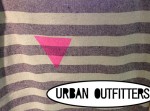 In February 2015, the Anti-Defamation League assailed Urban Outfitters for selling a gray and white striped tapestry emblazoned with pink triangles. The design, the ADL claimed, was ‘eerily reminiscent’ of the clothing Nazis forced gay prisoners to wear in concentration camps. ”
In February 2015, the Anti-Defamation League assailed Urban Outfitters for selling a gray and white striped tapestry emblazoned with pink triangles. The design, the ADL claimed, was ‘eerily reminiscent’ of the clothing Nazis forced gay prisoners to wear in concentration camps. ”
2. A “vintage,” faux-bloodstained Kent State Sweatshirt
In September 2014, Urban Outfitters sold what seemed to be a faux blood-spattered “Vintage Kent State Sweatshirt” for $129. The sweatshirt was widely interpreted as a reference to 1970’s Kent State massacre, in which four unarmed students were shot and killed by the Ohio National Guard during a Vietnam War protest. As part of Urban Outfitters’ “Vintage Finds,” only a single sweatshirt was available; shortly after BuzzFeed wrote about the sweatshirt, someone purchased it and listed it on eBay for $550, with a $2,500 Buy It Now price.  “It was never our intention to allude to the tragic events that took place at Kent State in 1970,” said Urban Outfitters in a statement, “and we are extremely saddened that this item was perceived as such.”
“It was never our intention to allude to the tragic events that took place at Kent State in 1970,” said Urban Outfitters in a statement, “and we are extremely saddened that this item was perceived as such.”
3. Pill bottle-shaped alcohol paraphernalia
Prescription drug abuse is the country’s leading cause of accidental death, so it’s not surprising that Urban Outfitters’ line of shot glasses, pint glasses, and flasks resembling prescription pill bottles raised eyebrows. Kentucky Gov. Steve Beshear and Rep. Hal Rogers (R-Ky.) were particularly upset — their state loses more people to prescription drugs than to traffic accidents — and joined a push to get the retailer to pull the items. In a letter  to the store’s CEO, Beshear called the sale of “teen-targeted items that glamorize prescription drugs…repulsive.” Urban Outfitters stopped selling the products shortly thereafter.
to the store’s CEO, Beshear called the sale of “teen-targeted items that glamorize prescription drugs…repulsive.” Urban Outfitters stopped selling the products shortly thereafter.
4. Pro-booze shirts for kids
The T-shirt slogans — “I Vote for Vodka,” “Misery Loves Alcohol,” “I Drink You’re Cute,” “USA Drinking Team” — are especially galling because teenage drinking is a worrisome and growing problem that’s associated with sexual activity and decreased condom use, said Sarah B. Weir at Yahoo Shine. “For parents already rattled about kids and booze, it’s a jolt to discover these items when fall clothes shopping with one’s teen or ‘tween.”
5. The “Punk as f**k” shirt
Upon checking on her teenage daughter’s online order from Urban Outfitters’ website, a New Jersey mom was horrified to discover that she had ordered a T-shirt that proudly displays the F-bomb. “I was flabbergasted that that would be the way Urban Outfitters presented themselves,” said Margaret Gutierrez. She also discovered that the T-shirt’s “Punk as f**k” logo and a pink marijuana-leaf motif were being sold on stickers, and requested that Urban Outfitters remove all the offending items. Although the retailer declined to comment, the items were quietly removed from the website.
6. The Holocaust-evoking “Jewish Star” shirt
Urban Outfitters put itself in the bad graces of Jewish groups in April 2012, after selling a T-shirt with a six-pointed star badge that, to some eyes, looks eerily like the Star of David patch Jews were forced to wear in Nazi Germany, leading up to and during the Holocaust. The $100 yellow T-shirt, from Danish designer Wood Wood, “represents a new low” for Urban Outfitters, said the Anti-Defamation League’s Philadelphia director, Barry Morrison. The symbolism is “extremely distasteful and offensive,” and the group is “outraged that your company would make this product available to your customers.”
7. Ersatz “Navajo” fashion
 In October 2011, Sasha Houston Brown, a member of the Santee Sioux Nation, demanded that Urban Outfitters pull its “distasteful and racially demeaning” line of Navajo-labeled clothes and accessories. The Navajo Nation holds 12 trademarks on the word “Navajo,” including for clothing, and a 1990 federal law prohibits falsely suggesting that products are made by Native Americans. These “blatantly racist” knockoffs clearly aren’t, and they’re tacky to boot, Brown said in an open letter to CEO Glen Senk. “I doubt that you consulted the Navajo Nation about using their tribal name on sophisticated items such as the ‘Navajo Hipster Panty.'”
In October 2011, Sasha Houston Brown, a member of the Santee Sioux Nation, demanded that Urban Outfitters pull its “distasteful and racially demeaning” line of Navajo-labeled clothes and accessories. The Navajo Nation holds 12 trademarks on the word “Navajo,” including for clothing, and a 1990 federal law prohibits falsely suggesting that products are made by Native Americans. These “blatantly racist” knockoffs clearly aren’t, and they’re tacky to boot, Brown said in an open letter to CEO Glen Senk. “I doubt that you consulted the Navajo Nation about using their tribal name on sophisticated items such as the ‘Navajo Hipster Panty.'”
8. Stealing a woman’s necklace design
In May 2011, Chicago jewelry designer Stevie Koerner was sent a link to Urban Outfitters’ website, which was selling a line of jewelry nearly identical to her 2-year-old World/United States of Love line. “My heart sank a little,” she wrote on her blog. “I understand that they are a business, but it’s not cool to completely rip off an independent designer’s work.” Twitter users glommed on to her post, making Koerner such a cause célèbre that Urban Outfitters said the next day they’d look into it… then quietly pulled the collection.
9. The “Obama/Black” T-shirt option
In January 2010, Jezebel editor Anna North noticed a T-shirt for sale on Urban Outfitters’ website in two color combinations: “White/Charcoal” and “Obama/Black.” Urban Outfitters said they “screwed up, and are sincerely sorry,” explaining that they had internally developed a color called “Obama Blue” that accidentally appeared on the website. “Fine, Urban Outfitters: You’re not racist, just careless,” said University Chic. But given your history and penchant for making controversial political statements, “you can’t blame anyone for assuming” the worst.
10. Pulling gay marriage T-shirts
In late 2008, in the heat of California’s vote on gay-marriage-killing Proposition 8, Urban Outfitters started selling a T-shirt emblazoned with the phrase “I Support Same-Sex Marriage” — then pulled it from shelves and the web less than a week later, with a buyer blaming “too much bad press.” Shirt designer Tara Littman searched around for this “bad press”… and found exactly one negative blog entry. Since that’s hardly a blip on the Urban Outfitters controversy meter, and “Hayne is a notably right-wing Republican who supports senators who vote for legislation against gay marriage,” said Sharon Clott in New York, we’re guessing this was a top-down decision.
11. The “Eat Less” T-shirt
The next group Urban Outfitters offended was… well, anyone who thinks it’s a bad idea to sell a V-neck T-shirt with the words “Eat Less” on it, displayed on a “rail-thin brunette model in a hiked-up miniskirt,” said Ryan Halliday at FOX Boston. There were enough of those people that, after a backlash, the shirt was pulled from Urban Outfitters’ website in June 2010. But not its stores, said Amy Odell in New York. But hey, at least it’s not as blatant as the shirt sold elsewhere displaying Kate Moss’ old slogan, “Nothing tastes as good as skinny feels.”
12. The “Victimized” armed Palestinian T-shirt
A shirt with a Palestinian youth carrying an AK-47 assault rifle over the word “Victimized” riled up the Jewish community in 2008. “Of course this T-shirt is supporting terrorism,” said fashion designer Leah Weiss, quoted in Haaretz. “I will never shop there again.” Urban Outfitters pulled the shirt, but it already had a rocky relationship with Jews after selling a 2004 T-shirt with the words “Everybody Loves a Jewish Girl” surrounded by dollar signs and shopping bags. “If Urban Outfitters is good at something, it is getting publicity,” said Ami Cohen, an American Apparel employee in Tel Aviv. “This company has a history of coming into conflict with Jews.”
13. The “salacious” photo of a 15-year-old
In August 2011, California model Hailey Clauson, then 16, sued Urban Outfitters for $28 million, saying they had used a “blatantly salacious” photo of her on a shirt without permission. Photographer Jason Lee Parry snapped the picture of Clauson in short leather shorts, legs spread and sitting on the back of a motorcycle, when she was 15, and Parry allegedly agreed not to release the photo after Clauson’s modeling agency complained. The focus of the shot is “her crotch area,” says the lawsuit, making it of special interest to “the likes of pedophiles.”
14. “Ghettopoly”
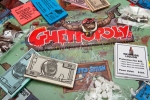 In 2003, Urban Outfitters angered the African-American community with a Monopoly knockoff called Ghettopoly, featuring properties like “Cheap Trick Avenue” and “Smitty’s XXX Peep Show,” and “Hustle” bonus cards like: “You got yo whole neighborhood addicted to crack. Collect $50.” Black clergy called for a boycott. “There’s no way that game could be taken in any way other than that this man had racist intent in marketing it,” said the Rev. Glenn Wilson in Philadelphia. That man, creator David Chang, disagreed. “It draws on stereotypes not as a means to degrade, but as a medium to bring together in laughter,” Chang said. “If we can’t laugh at ourselves… we’ll continue to live in blame and bitterness.”
In 2003, Urban Outfitters angered the African-American community with a Monopoly knockoff called Ghettopoly, featuring properties like “Cheap Trick Avenue” and “Smitty’s XXX Peep Show,” and “Hustle” bonus cards like: “You got yo whole neighborhood addicted to crack. Collect $50.” Black clergy called for a boycott. “There’s no way that game could be taken in any way other than that this man had racist intent in marketing it,” said the Rev. Glenn Wilson in Philadelphia. That man, creator David Chang, disagreed. “It draws on stereotypes not as a means to degrade, but as a medium to bring together in laughter,” Chang said. “If we can’t laugh at ourselves… we’ll continue to live in blame and bitterness.”
Management has a proven record of achieving returns for shareholders. Shareholders of Urban Outfitters achieved an 18% compound annual return over the five years starting Jan. 31, 2009, and ending Jan. 31, 2014, roughly in line with the S&P 500 Composite Index compound annual return of 19%. Operating margins have been improving since fiscal 2012, and revenue growth has averaged a 10% compound annual growth rate over the past three years. We believe investments in store expansion, store experience, marketing, and e-commerce are increasing shareholder value. Additionally, we believe the decision not to pay a dividend during this heavy growth and investment stage makes sense, given that the reinvestment of capital has yielded shareholder returns.
Eric F. Artz 44 Chief Financial Officer
Glen A. Bodzy 59 General Counsel and Secretary
Tedford G. Marlow 60 CEO of Urban Outfitters Group
David W. McCreight 48 CEO of Anthropologie Group
Wendy B. McDevitt 47 President, Terrain Brand
Freeman M. Zausner 64 Chief Operating Officer
Margaret Hayne 54 President, Free People Brand
Francis J. Conforti 36 Chief Accounting Officer
Scott A. Belair 64 Director
Harry S. Cherken, Jr. 62 Director
Joel S. Lawson III 64 Director
Robert H. Strouse 63 Director
Edward N. Antoian 56 Director

